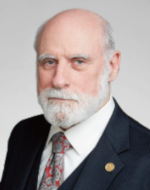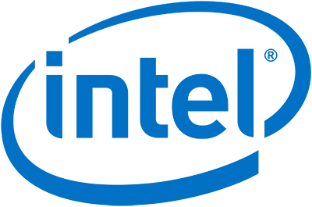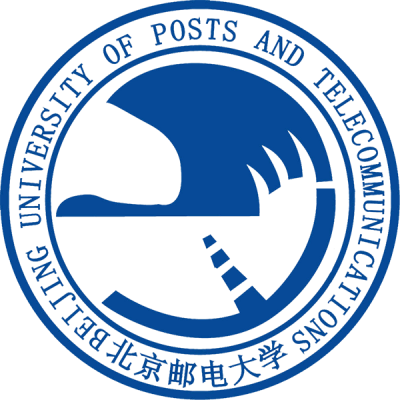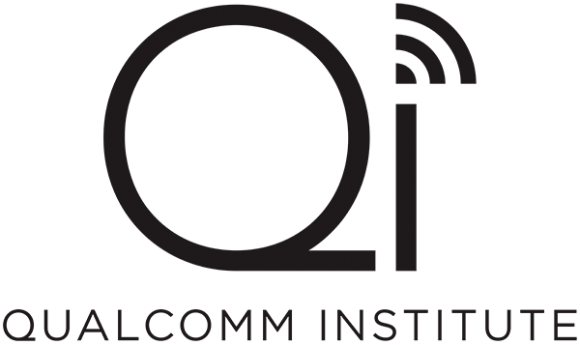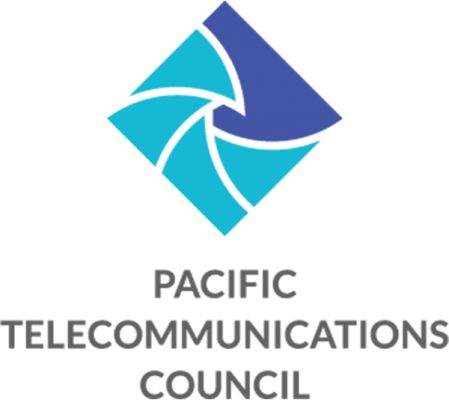View Keynote Presentations
View Keynote Videos
Tuesday, 10 December 2019
Time: 09:00-10:30
Room: Monarchy Ballroom (Hilton Waikoloa Village)
Keynote A: Vinton G. Cerf, Vice President and Chief Internet Evangelist, Google
Keynote B: Lizhong Zheng, Professor, Massachusetts Institute of Technology (MIT)
Wednesday, 11 December 2019
Time: 11:00-12:30
Room: Monarchy Ballroom (Hilton Waikoloa Village)
Keynote C: David Lassner, President, University Hawai'i (UH)
Keynote D: Geng Wu, Intel Fellow and Chief Technologist, Wireless Technologies and Standards, Intel Corporation
Thursday, 12 December 2019
Time: 11:00-12:30
Room: Monarchy Ballroom (Hilton Waikoloa Village)
Keynote E: Richard Li, Chief Scientist of Network Technologies, Futurewei Technologies, Inc. USA
Keynote F: Daniel J. Blumenthal, Professor of ECE and Director of Terabit Optical Ethernet Center (TOEC), University of California at Santa Barbara
Keynote Speakers
The following keynote speakers have been confirmed for IEEE GLOBECOM 2019.
Tuesday, 10 December 2019
Time: 09:00-10:30
Room: Monarchy Ballroom (Hilton Waikoloa Village)
Vinton G. Cerf
Vice President and Chief Internet Evangelist, Google
Title: Safety, Security and the Internet of Things
Abstract: We are well into the "Internet of Things" era for the Internet. Billions of devices are expected and it is not uncommon to find a dozen or even a score of Internet-enabled devices in residences and offices around the world. These systems run on software - some of which has not been well tested for safety and security. We need to introduce and promote an ethic of software safety and extended maintenance to protect the users of these devices. Software updates must be assured of integrity before installation. Consumers have a right to expect support for the lifetime of the devices. What could possibly go wrong?
Biography: Vinton G. Cerf is vice president and Chief Internet Evangelist for Google. He contributes to global policy development and continued spread of the Internet. Widely known as one of the "Fathers of the Internet," Cerf is the co-designer of the TCP/IP protocols and the architecture of the Internet. He has served in executive positions at MCI, the Corporation for National Research Initiatives and the Defense Advanced Research Projects Agency and on the faculty of Stanford University.
Vint Cerf served as chairman of the board of the Internet Corporation for Assigned Names and Numbers (ICANN) from 2000-2007 and has been a Visiting Scientist at the Jet Propulsion Laboratory since 1998. Cerf served as founding president of the Internet Society (ISOC) from 1992-1995. In addition, Cerf is honorary chairman of the IPv6 Forum, dedicated to raising awareness and speeding introduction of the new Internet protocol. Cerf is a Foreign Member of the British Royal Society and Swedish Academy of Engineering, and Fellow of IEEE, ACM, and American Association for the Advancement of Science, the American Academy of Arts and Sciences, the International Engineering Consortium, the Computer History Museum, the British Computer Society, the Worshipful Company of Information Technologists, the Worshipful Company of Stationers and a member of the National Academy of Engineering. He has served as President of the Association for Computing Machinery, chairman of the American Registry for Internet Numbers (ARIN) and completed a term as Chairman of the Visiting Committee on Advanced Technology for the US National Institute of Standards and Technology. President Obama appointed him to the National Science Board in 2012.
Cerf is a recipient of numerous awards and commendations in connection with his work on the Internet, including the US Presidential Medal of Freedom, US National Medal of Technology, the Queen Elizabeth Prize for Engineering, the Prince of Asturias Award, the Tunisian National Medal of Science, the Japan Prize, the Charles Stark Draper award, the ACM Turing Award, the Franklin Medal, Officer of the Legion d’Honneur and 29 honorary degrees. In December 1994, People magazine identified Cerf as one of that year's "25 Most Intriguing People."
His personal interests include fine wine, gourmet cooking and science fiction. Cerf and his wife, Sigrid, were married in 1966 and have two sons, David and Bennett.
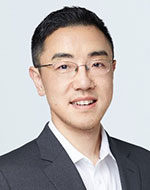 Lizhong Zheng
Lizhong Zheng
Professor, Massachusetts Institute of Technology (MIT)
Title: Neural Networks for Physical Layer Communication Problems
Abstract: There are many places that learning algorithms, in particular neural networks, can be used in communication systems, but physical layer problems are often considered harder, or even unsuitable for neural networks. This is mainly because that we traditionally take a model-based approach in communication problems, and often expect strong guarantees on the performance, optimality, robustness, and efficient use of resources, which are all difficult with neural network solutions. The core issue is that unlike image or natural language problems, a communication system is always carefully designed, with structures that are critical in order to achieve the desired performance. However, there is no natural way to use the knowledge about these structures in neural networks, for which part of the design philosophy is to be model agnostic.
We show in this talk a few examples of how to alter the operations in neural networks to include the structural knowledge in the processing and to solve physical layer communication problems. Our solutions are based on an information theoretic interpretation of neural networks as learning the informative features, where the notion of “informative” can be naturally generalize to include structural information of the problem, such as symmetry, regularity, and specific parameterization like the fading coefficients. We demonstrate that such domain knowledge can be used flexibly to improve the detection accuracy, to reduce the learning cost, or to make the solutions more generalizable. With these examples, we try to make the point that combining structural knowledge in data-driven learning algorithms can indeed provide a powerful alternative to communication problems.
Biography: Lizhong Zheng received the B.S and M.S. degrees, in 1994 and 1997 respectively, from the Department of Electronic Engineering, Tsinghua University, China, and the Ph.D. degree, in 2002, from the Department of Electrical Engineering and Computer Sciences, University of California, Berkeley. Since 2002, he has been working at MIT, where he is currently a professor of Electrical Engineering. His research interests include information theory, statistical inference, communications, and networks theory. He received Eli Jury award from UC Berkeley in 2002, IEEE Information Theory Society Paper Award in 2003, and NSF CAREER award in 2004, and the AFOSR Young Investigator Award in 2007. He served as an associate editor for IEEE Transactions on Information Theory, and the general co-chair for the IEEE International Symposium on Information Theory in 2012. He is an IEEE fellow.
Wednesday, 11 December 2019
Time: 11:00-12:30
Room: Monarchy Ballroom (Hilton Waikoloa Village)
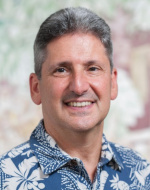 David Lassner
David Lassner
President, University Hawai'i (UH)
Title: Advanced Networking for Research and Education: View from the Pacific.
Abstract: High speed data links of 100Gbps and more routinely carry research and education data among colleges and universities across the globe. The organizations that build and operate these interconnected networks are primarily academic consortia and governments. Asia and Australia have been well-connected to North America but most of the Pacific Islands have presented significant challenges. Thus the Pacific has been the last region on earth to join the global fabric of research and education networks (R&E Networks or RENs). This presentation will provide an update on R&E Networking in the region with an emphasis on the status in the Pacific. It will highlight new initiatives such as the Guam Open R&E Exchange (GOREX), the 3D HoloCampus project connecting Hawaiʻi and American Samoa for education, and the emerging PolyREN initiative in French Polynesia. It will also describe prospects for the future based on new submarine fiber systems to previously unconnected island nations and economies.
Biography: David Lassner is the 15th president of the University of Hawaiʻi (UH), the statewide system comprising all public higher education in Hawaiʻi. He also currently serves as interim Chancellor of the University of Hawaiʻi at Mānoa, the flagship research campus of the UH System. Lassner’s current agenda includes a focus on helping more Hawaiʻi residents earn college credentials and developing an innovation sector to strengthen the Hawaiʻi economy while creating high-quality jobs. He is also advancing the UH commitments to sustainability and to becoming a model indigenous-serving university.
Lassner has worked at the university since 1977, holding the position of vice president for information technology and chief information officer for many years before being appointed President. Lassner is also a member of the university’s cooperating graduate faculty and has taught both online and in-person in computer science, communications, business and education.
Lassner is currently a commissioner of the Western Interstate Commission on Higher Education (WICHE), a board member for the National Association of System Heads (NASH), and a member of the Board of Governors of the East West Center. In his prior positions Lassner played an active leadership role in a variety of local, national and international information and communications technology organizations. He served on the boards of Hawaiʻi’s High Technology Development Corporation and Public Broadcasting Service affiliate and he chaired the Hawaiʻi’s Broadband Task Force. Lassner also served on the board of Internet2, was a co-founder and board member of the Kuali Foundation, and past-chair of the boards of the Pacific Telecommunications Council and of EDUCAUSE.
Lassner led Hawaiʻi’s major statewide federally funded project that interconnected all public schools, libraries and higher education campuses on six islands with fiber optics and has received multiple National Science Foundation (NSF) grants over the past 20 years focused on research and education networking and cyberinfrastructure. He has been principal investigator (PI) for over $400 million in extramural contracts and grants and is currently PI for the DoD’s Maui High Performance Computing Center, for the Pacific Disaster Center, which provides information support for disaster managers and planners in the Asia-Pacific region and beyond, and for an NSF International Research Networking Connections program grant focused on research & education networking in the Pacific and Australasia.
Lassner earned an AB in economics summa cum laude and an MS in computer science from the University of Illinois at Urbana-Champaign (UIUC). He also earned a PhD in communication and information sciences from the University of Hawaiʻi. He has been recognized with Internet2’s Richard Rose Award, the Richard Jonsen Award from the WICHE Cooperative for Educational Technologies, CENIC’s inaugural Christine Haska Distinguished Service Award, and as a Distinguished Alumni Educator of the UIUC Computer Science Department and a Distinguished Alumnus of the University of Hawaiʻi.
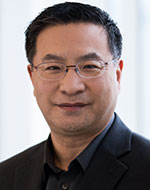 Geng Wu
Geng Wu
Intel Fellow and Chief Technologist, Wireless Technologies and Standards, Intel Corporation
Title: Future Generation Mobile Connected Intelligence
Abstract: 5G is the first generation of wireless technologies that brought communications and computing together to enable new applications and services beyond smartphones. Future generations of wireless technologies will further integrate data for machine learning and autonomous control for an unprecedented green and intelligent society. It requires a paradigm shift in how we architect our networks, how we design our next air interface, and how we integrate software and hardware into a new generation of computing + communication + data platforms that brings the power of mobile connected intelligence to fuel the next round of technology innovations and market growth. In this talk, we will share our industry vision and system perspectives on the key challenges, fundamental requirements, major technology gaps, and the key elements for the next generation network and device technologies. We will highlight a number of research and technology development directions that can help to bring different technology elements together for a future generation mobile connected intelligence framework.
Biography: Dr. Geng Wu is an Intel Fellow and chief technologist for wireless technologies and standards at Intel Corporation. He leads Intel’s 5G and future generation wireless standards development and ecosystem collaboration. He heads Intel’s delegation to 3GPP, as well as serves as a director of the board at MulteFire Alliance and Automotive Edge Computing Consortium,
Wu joined Intel in 2009 as a technology advisor and contributor to Intel’s Cloud-RAN and machine-to-machine platform and technology development. In 2010, he was named chief architect for wireless standards development, with an emphasis on 3GPP LTE and LTE-A development. Before assuming his current role, he led the development of 5G air interface and network standards at Intel, working with internal and external colleagues on the next generation of computing and communication technologies.
Wu has more than 30 years of research and development experience in the wireless industry. He has contributed extensively to global 2G CDMA, 3G 1xRTT, UMTS, HSPA and 4G WiMAX, LTE radio interface and network architecture design and development. His current research interests include mobile computing and communication platforms for artificial intelligence, future radio access network architectures, channel modeling for high frequency bands, next-generation air interface technologies, and distributed computing and communication for mobile services and applications.
Before joining Intel, Wu served as director of wireless architecture and standards at Nortel Networks, where he was responsible for system performance, standards research, and technology development in 3GPP2, 3GPP, IEEE and WiMAX. In 2004, Nortel honored him with its Corporate Technology Award of Excellence. Wu received his bachelor’s degree in electrical engineering from Tianjin University in Tianjin, China; and his Ph.D. in telecommunications from Université Laval in Québec, Canada. He has been issued more than 30 U.S. patents, with many additional patents pending. He has also authored or co-authored numerous research publications in the field of mobile wireless communications, computing and networking.
Thursday, 12 December 2019
Time: 11:00-12:30
Room: Monarchy Ballroom (Hilton Waikoloa Village)
 Richard Li
Richard Li
Chief Scientist of Network Technologies, Futurewei Technologies, Inc. USA
Title: New IP: Going beyond the Limits of the Internet
Abstract: The Internet is one of the most successful technical achievements of our time. However, it is reaching the limits of what it can support in the face of emerging applications such as holographic type communications, industrial control, autonomous driving, and smart society. This talk analyzes the current Internet’s constraints and limitations, identifies new requirements for future networks, and defines new capabilities and services expected from inside the network. It then proceeds to outline New IP that evolves the Internet for future applications. New IP will unleash the next wave of internet innovations and create new business opportunities across industry verticals, vendors, and service providers.
Biography: Dr. Richard Li is Chief Scientist and Vice President of Network Technologies at Futurewei Technologies Inc., Huawei R&D USA. Richard also serves as the Chairman of the ITU-T FG Network 2030 and as the Vice Chairman of the European ETSI ISG NGP (Next-Generation Protocols). Prior to joining Futurewei, he worked with Cisco and Ericsson in the field of networking technologies, standards, solutions and operating systems. During his career, Richard spearheaded network technology innovation and development in Routing and MPLS, Mobile Backhaul, Metro and Core Networks, Data Center, Cloud and Virtualization. Richard is extremely passionate about advances in data communications and solving problems in their entirety, thus creating a bigger and long-term impact on the networking industry. Currently he leads a department of scientists and engineers to develop technologies for next-generation network architectures, protocols, algorithms, and systems in the support of forward-looking applications and industry verticals that are expected to bring the digital society to a higher level.
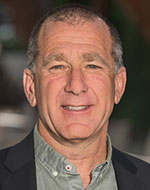 Daniel J. Blumenthal
Daniel J. Blumenthal
Professor of ECE and Director of Terabit Optical Ethernet Center (TOEC), University of California at Santa Barbara
Title: Quiet Light for Low-Energy Scalable Data Center Interconnects
Abstract: As Hyperscale data centers become prevalent, switch ASIC chips, the engines of the Data Center Interconnect (DCI), will grow from 12.8 Tbps today to 100 Tbps and beyond, straining engineerable fiber optic interconnect solutions and their cost and energy resources. In this talk a new approach that leverages the properties of quiet light, spectrally-pure highly-stable light developed for large scale physics experiments, to bring ultra-high capacity long-haul coherent optical solutions into the DCI without energy consuming electronics. The FRESCO project based on this approach (FREquency Stabilized Coherent Optical WDM Links for Low Energy DCIs), funded under the ARPA-e OPEN-2018 program, will be described and future opportunities and challenges discussed.
Biography: Dr. Daniel J Blumenthal is a Professor in the Department of ECE at UCSB, Director of the Terabit Optical Ethernet Center (TOEC) and heads the Optical Communications and Photonics Integration (OCPI) group. He is Co-Founder of Packet Photonics Inc. and Calient Networks, manufacturers of optical communications and network equipment. Dr. Blumenthal is lead PI for the recently awarded ARPAe OPEN-2018 funded project “FRESCO: FREquency Stabilized Coherent Optical Low‐Energy WDM DC Interconnects.”
He holds 23 patents and has published over 425 papers in the areas of optical communications and optical packet switching, ultra-narrow linewidth integrated lasers, optical gyro sensors, photonic integration integrated circuits, integrated atom cooling and photonic molecules, nano-photonics and microwave photonics. He is co-author of Tunable Laser Diodes and Related Optical Sources (New York: IEEE–Wiley, 2005) and has published two invited papers in the Proceedings of the IEEE.
Dr. Blumenthal is a 2017 Fellow of the National Academy of Inventors (NAI), Fellow of the IEEE and Fellow of the Optical Society of America. He has served on the Board of Directors for National LambdaRail (NLR) and as an elected member of the Internet2 Architecture Advisory Council. He is recipient of a Presidential Early Career Award for Scientists and Engineers (PECASE), a National Science Foundation Young Investigator Award (NYI) and an Office of Naval Research Young Investigator Program (YIP) Award and has served on numerous program committees including OFC, Photonics in Switching and as guest editor of multiple IEEE Journal special issues.
Blumenthal received the Ph.D. degree from the University of Colorado, Boulder (1993), the M.S.E.E. from Columbia University (1988) and the B.S.E.E from the University of Rochester (1981).



